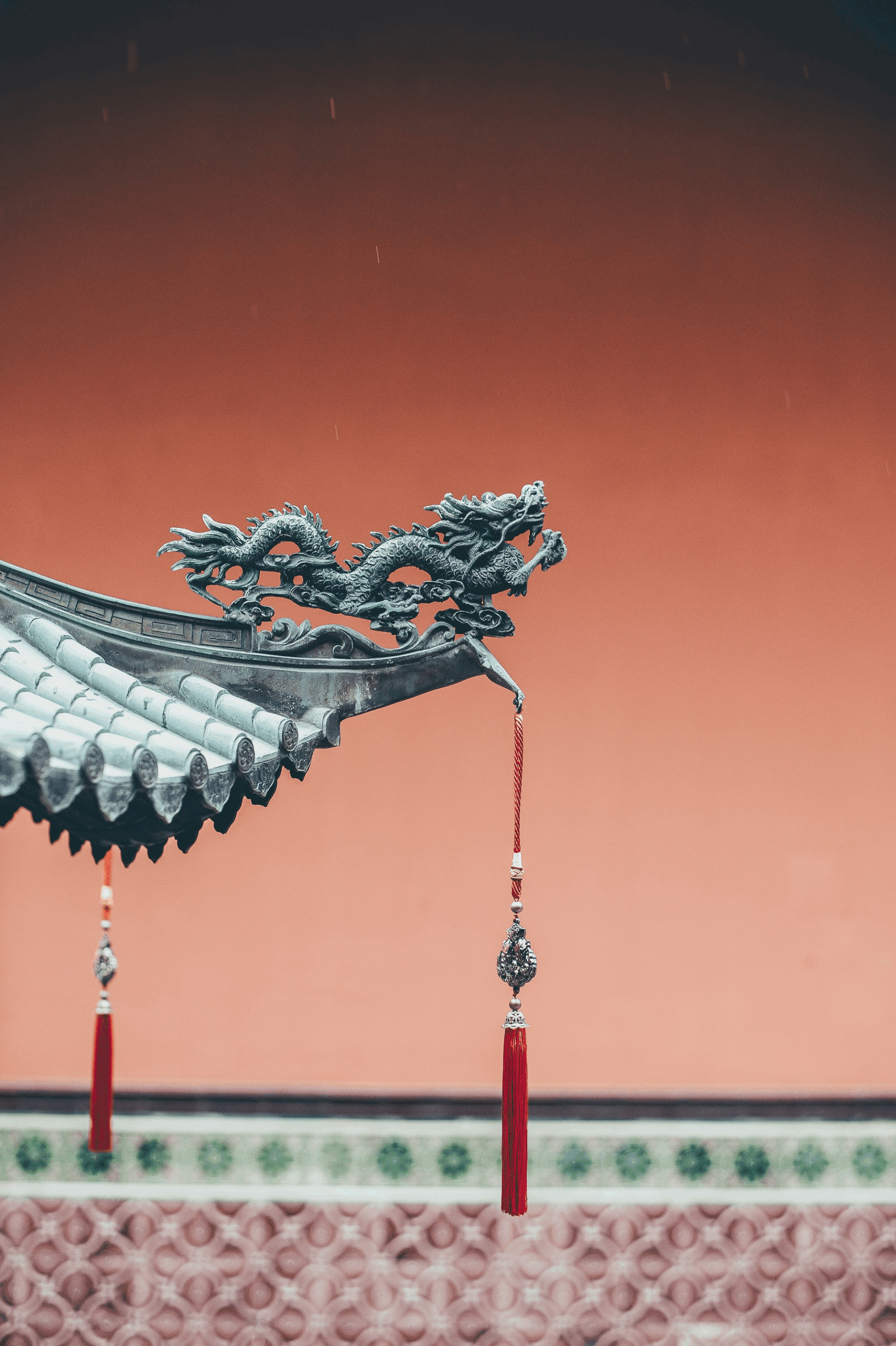Points of view
Reindustrializing France - Prioritizing Offense over Defense: The Textile Case
How can we transform the technological revolution into a lever for industrial reconquest? The textile sector offers a concrete illustration: a laboratory for reindustrialization combining innovation, circularity and sovereignty. Without relying solely on falsely protective regulations…
Planning and implementing reindustrialization is a major challenge for France. This point of view uses the textile industry as a pivot for reflection.
Thirty years ago, Philippe Duclos, Senior Partner and Founder of Antheus Advisors, had the privilege of taking part in the GATT negotiations in Geneva—a major turning point, marking the transition from the Multifibre Arrangement to the WTO Agreement on Textiles and Clothing. At the time, France aimed to integrate its textile industry into a more open global trade framework, confident that quality and innovation would enable Europe to withstand the wave of low-cost imports coming from Asia.
With hindsight, Europe’s response can no longer be limited to moving upmarket. We must face competitors now capable of combining volume, creativity, and industrial agility on a global scale.
The numbers speak for themselves: in France, the textile sector remains a true economic pillar. It generates about €14 billion in turnover, employs more than 60,000 people across 2,200 companies, and spans the entire value chain—from fiber production, spinning, weaving, and finishing, to garment manufacturing and distribution. The industry embodies recognized expertise, especially in technical, innovative, and luxury textiles—segments in which France is a major exporter. Yet 97% of textiles consumed in France are imported, and the trade deficit is heavy: nearly €17 billion in imports versus only €9 billion in exports.
However, “Made in France” is experiencing positive momentum. New companies emerge each year, driven by high-value technological solutions—technical, eco-friendly, or bio-based textiles. This vitality relies on technology and exports, which now account for almost 70% of the sector’s revenue. The industry capitalizes on its manufacturing excellence, its luxury tradition, and its commitment to sustainability: it adapts, innovates, and shines.
The French textile industry also reveals the broader industrial challenges facing France and Europe across multiple sectors—automotive, chemical, electronics, pharmaceuticals. It is both a mirror and, hopefully, a springboard. The real question is: how can we seize the technological revolution and reindustrialize to create the jobs of tomorrow?
A sector driven by innovation
For several years, France has bet on innovation and quality in its textile industry. High-performance fibers for sports, medical textiles, and technical garments—these high-value niches drive growth.
A new revolution is now underway in the textile industry.
- Artificial intelligence is transforming design, prototyping, production, and personalization—making it possible to create innovative designs, predict trends, and adapt collections in real time to consumer expectations.
- Smart robotics is now automating complex tasks such as cutting, sewing, and assembly, offering unprecedented precision and speed while dramatically reducing defects and waste.
- This increased automation promises a drastic reduction in production costs while strengthening flexibility, speed, and adaptability within industrial supply chains. These assets are essential for reshoring production closer to European consumers—meeting their demands for quality and sustainability while reducing the carbon footprint of transport.
This presents a unique opportunity to reinvest in large-scale industrial production in Europe. While massive job creation remains a challenge, the top priority is to relocalize value, reduce dependency on imports, and reinforce European industrial sovereignty.
To succeed in this transformation, it is crucial to integrate new investors—including those from China—who bring highly efficient, connected, and automated mass-production models. The future industrial model will rely on smart, connected, and flexible microfactories, capable of real-time product personalization, with AI-driven supply chains designed to eliminate overproduction and waste.

A sector hindered rather than supported by regulation

Europe has created an ambitious regulatory framework: separate waste collection by 2025, a digital textile passport by 2030, Extended Producer Responsibility, and eco-design standards. The goals are clear — to reduce waste, ensure traceability, and enhance sustainability. But on the ground, these requirements are heavy to bear in the face of uneven global competition.
Counterfeiting remains a scourge: it causes losses of around €26 billion per year for European companies, representing roughly 10% of the market. The EU has indeed put legal tools in place (Directive 2004/48/EC on the enforcement of IP rights, Regulation [EU] No. 608/2013 on customs enforcement, and the EUIPO Observatory on IP Infringement), and customs authorities seize millions of counterfeit items every year — mainly clothing, footwear, and accessories.
Yet enforcement remains patchy, especially outside Europe. Offshored production and online commerce facilitate the massive spread of counterfeit products, particularly from Asia. Despite the clauses inserted in recent trade agreements, application remains inconsistent, especially in third countries. The result: competitive distortions that threaten thousands of European jobs.
Add to this context: land constraints, environmental and waste management obligations, complex taxation, legal disputes, and a dense labor code. Building a new factory in France often feels like an obstacle course. Costs rise, regulatory constraints pile up.
In this environment, entrepreneurship in France demands almost superhuman perseverance. Yet it is precisely in the face of this challenge that we must invest and simplify, rather than continue adding new hurdles.
WHAT IF EUROPE BECAME THE CHINA OF CHINA?
For two decades, we viewed China as the “factory of the world” — abundant labor, unbeatable costs, contract manufacturing. We outsourced, offshored, and subcontracted, convinced that the competitive (even comparative) advantage would last forever.
But after years of studying us, learning our processes, and copying our models, Chinese players have done the reverse journey. They are no longer just low-cost producers: they now master the entire value chain — from design, R&D, and patents, to mass production and digital marketing. They have taken control of the value added we once believed was secured in Europe.
The current risk? That Europe becomes the China of China — that is, a mere reservoir of mid-level skills, a second-tier subcontractor operating in segments Asian players have already outgrown, under the illusion that we have “kept assembly” but lost control over technology, platforms, and brand storytelling. A “premium subcontracting” continent — but no longer a decision-maker.
So, how can this be avoided?
- We must reindustrialize intelligently — not reshore for the sake of reshoring, but rebuild competitive value chains in future-oriented segments, even if that means requiring technology transfers through joint ventures that allow Chinese manufacturers to operate on European soil.
- We must specialize in innovation and usage — smart textiles, integrated services, premium circularity.
- We must create European platforms that can pool R&D, production, and distribution resources to reach critical mass.
- We must turn regulatory constraints into assets (traceability, carbon footprint, labels) to build credible differentiation.
- We must control strategic links (raw materials, machinery, software) and move back up the value chain.
- And finally, we must craft an inspiring narrative for industrial Europe — making “Made in Europe” a symbol of quality, ethics, and innovation, not a relic of the past.
This posture is not nostalgic protectionism — it is offensive industrialism. If Europe’s textile sector (and others) does not take this path, it risks becoming precisely what it once feared: the peripheral workshop of an external innovative power.

STRATEGIC REINDUSTRIALIZATION AND MOVING UP THE VALUE CHAIN: LESSONS FROM OTHER INDUSTRIES

Innovating in both product and use: going beyond “textile material”
Thesis: Textile must no longer be viewed as a low-differentiation commodity, but as a system that combines fibers + smart materials + associated services.
- Electronics and automotive: the case of batteries and energy storage
Industry leaders such as Tesla, CATL (Chinese battery producer), and LG Energy Solution don’t merely sell battery cells — they develop intelligent systems for management, cooling, software, and maintenance services. Europe is now attempting to build its own gigafactories (for example Northvolt in Sweden or ACC, a joint venture between Stellantis, TotalEnergies, and Mercedes-Benz) to recreate a complete battery industry. This shows that we don’t simply “relocalize a product”; we rebuild an entire technological platform. - High-end cosmetics and dermocosmetics
If textiles equipped with sensors — offered via rental or subscription models — or including services such as performance diagnostics, maintenance, or reconditioning become the norm, the competitive dynamic will shift. The core challenge will no longer be unit cost, but the ability to innovate and generate usage-based value.
Lesson for the textile industry:
If textiles equipped with sensors — offered via rental or subscription models — or including services such as performance diagnostics, maintenance, or reconditioning become the norm, the competitive dynamic will shift. The core challenge will no longer be unit cost, but the ability to innovate and generate usage-based value.
Pooling, cooperating, and building industrial platforms: breaking isolation
Thesis: An isolated textile SME will be overwhelmed. A network, platform, or “collaborative center of excellence” can provide technological scale, network effects, and shared risk.
- Aerospace: Airbus as a European archetype
Airbus is based on structured multinational cooperation, shared industrial standards, and common technological platforms (for example composites and propulsion systems), which strengthen its ability to move upmarket. Progress is made not by each company alone, but by an integrated industrial ecosystem. This model is no accident — it explains why Airbus remains one of the few global technological counterweights to American giants. - Electronics and semiconductors: strategic alliances
The EU is encouraging sectoral alliances — for example, the Alliance for Processors and Semiconductor Technologies — to pool R&D, financing, and industrialization efforts. Within the European Chips Act, the idea is that a few large-scale strategic projects can irrigate entire local value chains. - Steel industry: the rise of circular steel
The shift toward electric steel — produced from scrap metal — has made scrap a strategic resource. To build a true circular value chain, it’s not enough to add up capacities; the entire ecosystem must be rethought. This means pooling resources, cooperation among recyclers, foundries, and refiners, and building industrial platforms that ensure stable supply, consistent quality, and optimal valorization.
Lesson for the textile industry:
Europe could imagine textile technology clusters, shared technical textile factories, or co-development platforms (machinery, advanced fibers, modeling software) at the European or interregional level. This would lower entry barriers, spread risk, and mobilize cutting-edge expertise.


Leveraging ecological and circular transitions as competitive advantages
Thesis: Environmental “constraints” can become opportunities — to rethink offerings, sourcing, traceability, and circularity, creating differentiation against low-cost producers with fewer ethical standards.
- Construction: sustainable materials
Saint-Gobain (a French multinational specializing in construction materials) invests heavily in recycled insulation, bio-based materials, and low-carbon products. The “green label” has become a decisive factor for both public and private project developers. - Chemicals: the clean energy industry (hydrogen and electrolysis)
The EU’s Clean Industrial Deal aims explicitly to link reindustrialization and carbon neutrality, supporting manufacturers that rebuild local capacities (for example electrolyzers, hydrogen, or green materials). The wager: valorize low- or zero-carbon production over less-regulated imports. - Recycling: the circular economy
In several industries (plastics, metals), the scarcity of raw materials pushes companies to reshore recycling and invest in high-performance separation and purification technologies (for example, high-yield recovery and reprocessing of used equipment).
Lesson for the textile industry:
Rather than focusing only on fiber recycling — still limited technically and economically — Europe’s textile industry could build circular competitiveness through other levers: establishing full end-to-end circularity via reuse and second life, reinforcing certified material traceability, investing in energy-intensive processes now powered by green energy, and introducing demanding environmental labeling as a market barrier. The goal: to oppose “cheaper but opaque” imports with a model based on quality, transparency, and sustainability.
Capturing upstream value: vertical integration or control of key segments
Thesis: To escape dependence on dominant suppliers (fibers, machinery, services), some industries have moved upstream to secure raw materials, patents, or critical components.
- Pharmaceuticals and biotechnology
Many large laboratories have internalized or co-developed their bioproduction, formulation, or vector platforms (for example mRNA technologies). This reduces dependence on external suppliers, often based in the U.S. or Asia. - Automotive industry
Tesla is a model of vertical integration and control over all key technologies for electric vehicles: from metal sourcing and battery manufacturing to component design and assembly, direct sales, autonomous-driving software, and charging networks.
Lesson for the textile industry:
Following these examples could mean:
- Investing in advanced fibers and raw materials (nanofibers, bio-based fibers, smart textiles).
- Controlling or co-owning sensitive machinery (dyeing, finishing, nanocoatings).
- Integrating software or sensor components directly into textile products.
This increased control over strategic segments allows Europe to recapture part of the value currently ceded to Asian suppliers.


Financing industrial scale-up: bridging the capital gap and structuring public–private support
Thesis: Many reindustrialization projects fail due to insufficient capitalization, high financing costs, or a lack of long-term vision. The solution is to build a true industrial financing chain.
- The European Union and its industrial policies
As of 2025, the EU is multiplying instruments to encourage reindustrialization — such as the Clean Industrial Deal, new financing mechanisms, and relaxed state-aid rules — to accelerate strategic industrial projects. Member states are encouraged to build long-term public–private partnerships. - Bpifrance and business support
Bpifrance (France’s public investment bank) states that “winning the reindustrialization battle” rests on three pillars: innovation, investment, and internationalization. In other words, the goal is not merely to finance factories, but to fund industrializable innovations that can succeed internationally. - Large-scale projects (IPCEI and other European strategic programs)
Certain transnational projects — such as IPCEI (Important Projects of Common European Interest) — enable the pooling of costs, the securing of value chains, and the alignment of member states around common funding initiatives.
Lesson for the textile industry:
Following these models could mean:
- Identifying structural projects (for example, a “European technical textiles factory”) that could qualify for European mechanisms.
- Promoting patient capital, industrial scale-up funds, and dedicated equipment financing (advanced machinery, specialized tooling).
- Aligning public strategies (grants, subsidies, export credit, risk sharing) with a robust industrial vision.
Synthesis: a plausible roadmap for textile reindustrialization
Based on these levers, a strategic roadmap for the European and French textile sectors might look like this:
- Map out high-value segments (technical textiles, smart fabrics, high-performance fiber recycling).
- Build shared industrial platforms to mutualize R&D, equipment, and innovation.
- Integrate vertically the critical links (fiber, treatment, sensors, software).
- Turn ecological transition into a competitive advantage, not a restrictive cost.
- Create a robust, aligned financing chain (public–private, industrial capital).
- Export ambition: reindustrialization is meaningful only if the product is competitive beyond the European market.
Such a trajectory would make reindustrialization not merely a “catch-up effort”, but a true industrial transformation of the textile sector — aligned with the technological and geopolitical challenges of the 21st century.
Conclusion
The strategic reindustrialization described for Europe’s textile industry cannot be a mere political slogan or reactive impulse. It must rest on:
- Technological choices.
- Collective structuring.
- Long-term financing.
- And a renewed vision of product use.
The industries studied — aerospace, batteries, construction, automotive — demonstrate that surviving the “Sinification” of markets requires more than defense. It requires going on the offense, with different weapons: innovation, platforms, technology control, and ecological differentiation.
If the textile industry can draw inspiration from these trajectories — not by imitation, but by adaptation — it can transform itself into Europe’s “textile vanguard industry”, rather than becoming the “low-cost Europe” of Asia.
